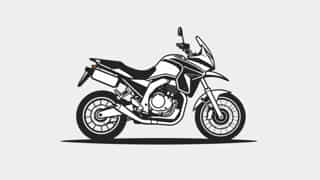Klr650 Popping On Deceleration
The Kawasaki KLR650 is known for its rugged build and reliability, but many riders report an issue that can be annoying or even concerning popping on deceleration. This phenomenon is not unique to the KLR650, but its occurrence in this specific dual-sport motorcycle often raises questions among owners. Understanding why this popping sound happens and how to address it can improve ride quality, performance, and peace of mind for KLR650 enthusiasts.
Understanding Deceleration Popping
What Is Deceleration Popping?
Deceleration popping refers to a series of popping or backfiring noises from the exhaust that occurs when a rider rolls off the throttle. This sound happens during engine braking and can vary from light crackles to loud bangs, depending on the condition of the motorcycle and its components.
Is It Harmful?
In most cases, popping on deceleration is not harmful to the motorcycle. It’s often a sign of unburnt fuel igniting in the exhaust system. However, persistent or excessively loud popping may indicate an underlying issue that could affect engine performance or fuel efficiency if not addressed.
Common Causes of Popping on Deceleration in the KLR650
Lean Air-Fuel Mixture
One of the most common causes of decel popping in the KLR650 is a lean air-fuel mixture. When the mixture has too much air and not enough fuel, unburnt fuel can be present in the exhaust. During deceleration, this fuel may ignite due to high exhaust temperatures, causing the popping sound.
- Stock jetting often runs lean due to emissions regulations
- Air leaks can make the mixture leaner
- Aftermarket exhausts may amplify this effect
Exhaust Leaks
Any leak in the exhaust system can pull in fresh air, leading to combustion of unburnt fuel in the exhaust. This is a common cause of backfiring and popping on many bikes, including the KLR650.
- Check the exhaust header and muffler connections
- Inspect gaskets for wear or improper sealing
Emission Control Systems
The KLR650 is equipped with a Pulse Air System (PAI) in some models, which introduces fresh air into the exhaust to reduce emissions. While effective for emissions control, it can also lead to popping by increasing oxygen content in the exhaust gases.
Aftermarket Exhaust Installation
Upgrading to an aftermarket exhaust can improve performance and reduce weight, but it may also change the back pressure and affect fuel-air tuning. If the carburetor or fuel injection system is not re-tuned to accommodate this, popping can occur.
How to Diagnose the Issue
Listen and Observe
Note when the popping occurs. Is it only during high-speed deceleration, or does it also happen at low RPMs? Does it happen when the engine is warm, cold, or both? These clues help narrow down the cause.
Check for Air Leaks
Inspect all the connections in your exhaust system. Look for black soot around joints, loose bolts, or degraded gaskets, which may point to a leak.
Inspect Air-Fuel Mixture
If your KLR650 is carbureted, check your jetting and adjust if necessary. If it’s fuel-injected, a remap or fuel controller may help optimize the mixture.
Evaluate Emissions Systems
Consider whether the emissions control system is contributing to the issue. Some riders choose to perform a PAI removal (block-off plate installation) to eliminate extra air injection into the exhaust system.
Solutions to Fix or Reduce Popping
Rejetting or Re-mapping
For carbureted models, rejetting the carburetor to enrich the fuel mixture can reduce or eliminate popping. This involves replacing the pilot and main jets with ones that better suit your altitude, climate, and exhaust setup.
Fuel Controller Adjustment
If your KLR650 has a fuel-injection system, a fuel controller or ECU re-flash can help enrich the air-fuel ratio to reduce popping. This is especially useful if the bike has an aftermarket exhaust or intake.
Repair Exhaust Leaks
Replace worn gaskets and ensure that all exhaust connections are tight. A leak at the header pipe or muffler junction is a frequent contributor to decel popping.
Remove or Disable the Pulse Air System
Installing a block-off plate to disable the PAI system can reduce the extra oxygen being added to the exhaust stream, thereby minimizing popping. This is a common mod among experienced riders.
Should You Be Concerned?
When Popping Is Normal
Some degree of popping can be considered normal, especially in older motorcycles or bikes tuned for performance. It often does not indicate a mechanical fault, especially if the engine runs smoothly otherwise.
When It Requires Attention
- Excessively loud or frequent popping
- Noticeable decrease in fuel efficiency
- Hesitation, bogging, or surging during throttle transitions
- Visible exhaust leaks or black carbon buildup
Tips for Long-Term Maintenance
Regular Tuning
Keep your carburetor or fuel injection system tuned according to your riding environment and any modifications you’ve made to your bike.
Routine Inspection
Inspect exhaust connections, air filters, and spark plugs regularly. Small maintenance efforts can prevent minor issues from becoming major problems.
Use Quality Fuel
Poor quality or low-octane fuel can contribute to incomplete combustion, which increases the likelihood of unburnt fuel in the exhaust system.
KLR650 popping on deceleration is a common issue with multiple causes and relatively simple solutions. From adjusting your air-fuel ratio to checking your exhaust system for leaks, several steps can help you minimize or eliminate this issue. While not inherently dangerous, excessive or unusual popping should be inspected to ensure your bike remains in top condition. Understanding the mechanics behind the phenomenon not only improves your riding experience but also helps maintain the performance and longevity of your KLR650.
